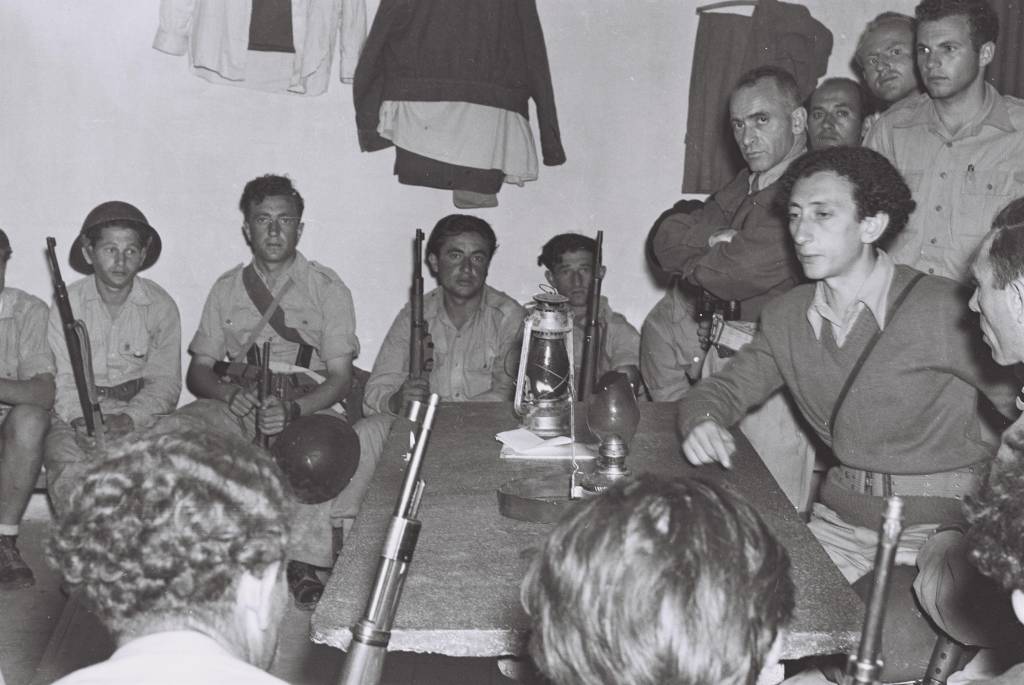It is no exaggeration to say that the fighters at Kibbutz Yad Mordechai played a critical role in saving the newly born modern State of Israel from annihilation.
When I was a child growing up in New Jersey, my parents took my family to Israel for a family vacation. I was only six years old and do not remember much from that trip. I do, though, have one particular vivid memory. We went to a place where we stood on a hill looking down into a valley and which there were life-size cutouts of hundreds of soldiers on the attack. It was as if they were clamoring to reach us yet stuck and forced to remain there forever. That scene remained with me for decades, never really knowing what or exactly where it was. Five years ago, I visited that place and finally closed the circle on my visit from so many years ago. Here is the story.
Yad Mordechai is a small kibbutz in southern Israel near the Gaza border. The kibbutz was founded in the 1930s and was renamed in 1943 for the leader of the Warsaw Ghetto uprising, Mordechai Anilewicz. The kibbutz is situated on a hill overlooking the coast of Israel.
When the State of Israel was declared in May of 1948, it was clear that war would soon follow as the Arab countries surrounding Israel (and others) had already declared their intentions to “push the Jews in to the sea.” Our enemy to the south, Egypt, vowed that she would march up the coastline and storm Tel Aviv.
A beekeeper seen near her beehives in Kibbutz Yad Mordechai (Isaac Harari/Flash90)
Egypt sent a force of about 10,000 soldiers under the command of Major General Ahmad Ali al-Mwawi. Mwawi divided his troops into two group; one marched towards Jerusalem, and the other headed up the coast towards Tel Aviv. This second group bypassed a number of tiny Jewish settlements on the way but decided that Yad Mordechai was too large and well-fortified to ignore. The Egyptian force reached the kibbutz on May 16.
In truth, Yad Mordechai was not that large – it had only 130 defenders. The Egyptian force consisted of 2,500 troops with armor, artillery and air support. Between the night of May 18-19, 92 women and children were evacuated from the kibbutz. The Egyptians camped just outside the kibbutz for two days, planning their assault.
On the dawn of May 19, the Egyptians began their attack. They succeeded in breaching the fences of the kibbutz, but after intense fighting they were repulsed, leaving behind dozens of casualties. The kibbutz suffered five dead and 11 wounded. In Cairo, it was announced prematurely that the kibbutz had fallen.
The next day, May 20, the Egyptians intensified their assault and were forced to retreat each time. Many more from the kibbutz were killed and the Egyptian casualties were piling up. Over the next two days, May 21-22, the Egyptians shelled the kibbutz relentlessly. The situation had gotten so bad for the remaining fighters on the kibbutz that they withdrew, without the Egyptians knowing, on May 22. On May 23, the Egyptians shelled the empty kibbutz for four hours and then entered to find it deserted.
The heroic ragtag defenders of Kibbutz Yad Mordechai were able to hold off the professional Egyptian army for five days. These five days gave the Israelis enough time to organize a defensive line against the Egyptian aggression. The Egyptian army was ultimately stopped before they got anywhere near Tel Aviv. It is no exaggeration to say that the fighters at Yad Mordechai played a critical role in saving the newly born modern State of Israel.
The kibbutz was retaken by the IDF in November of 1948. Today, Yad Mordechai is a thriving kibbutz famous for its production of honey and olive oil. It also has a wonderful museum dedicated to Holocaust remembrance. Its theme is: From Holocaust to Revival.
When visiting Yad Mordechai, one is able to see a simulation of the battlefield where the kibbutz members held off the Egyptian army. Life-size cutouts of the Egyptian soldiers fill the battlefield, giving a realistic sense of what it must have felt like to look out and see them approaching the kibbutz. I can attest from personal experience that a visit to the kibbutz would leave a lasting impression!
